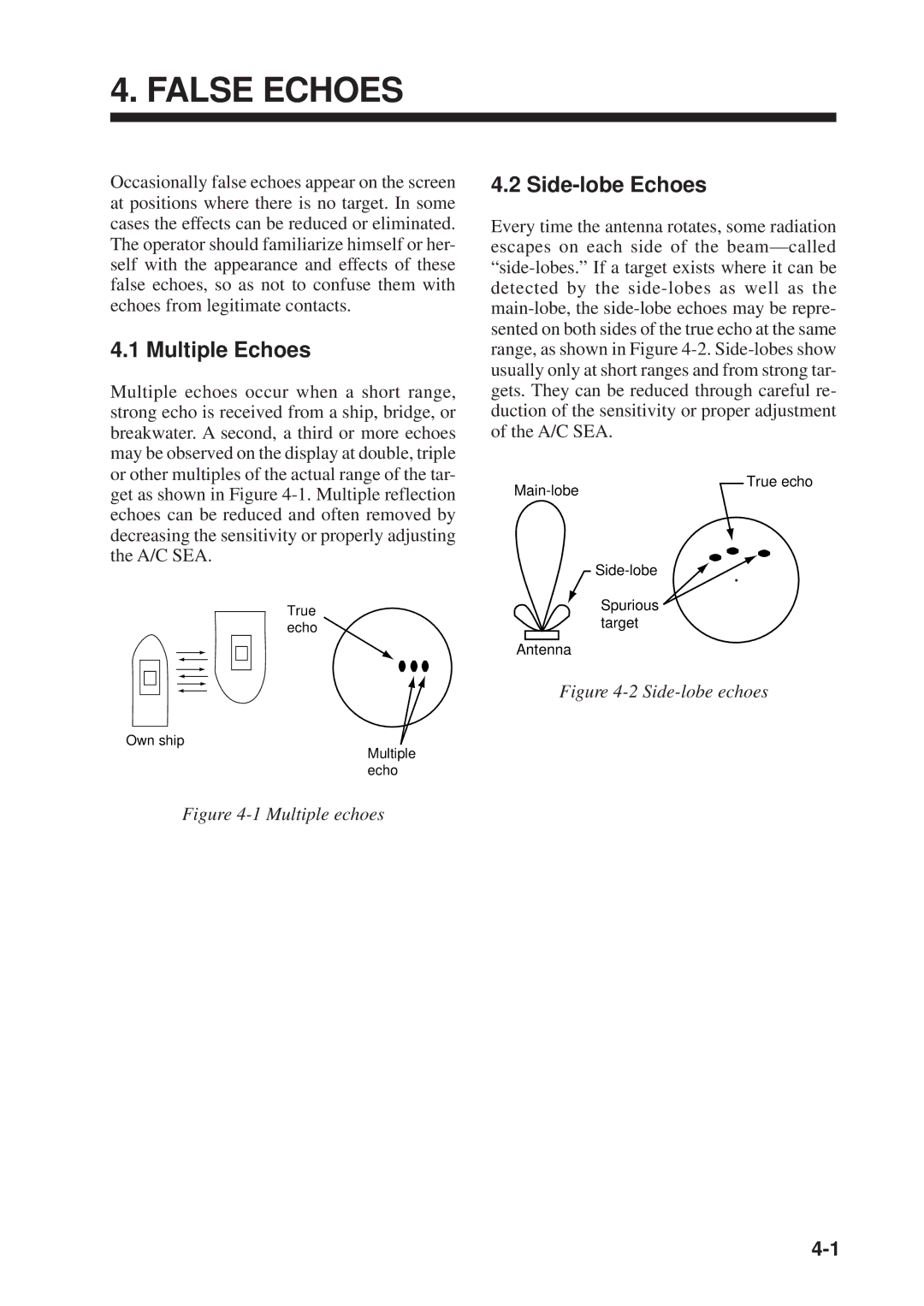
4. FALSE ECHOES
Occasionally false echoes appear on the screen at positions where there is no target. In some cases the effects can be reduced or eliminated. The operator should familiarize himself or her- self with the appearance and effects of these false echoes, so as not to confuse them with echoes from legitimate contacts.
4.1 Multiple Echoes
Multiple echoes occur when a short range, strong echo is received from a ship, bridge, or breakwater. A second, a third or more echoes may be observed on the display at double, triple or other multiples of the actual range of the tar-
4.2 Side-lobe Echoes
Every time the antenna rotates, some radiation escapes on each side of the
get as shown in Figure
True echo
True echo
Own ship
Multiple echo
Figure 4-1 Multiple echoes
![]()
Spurious target
Antenna
